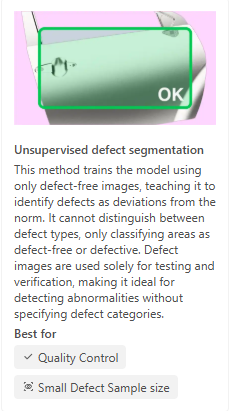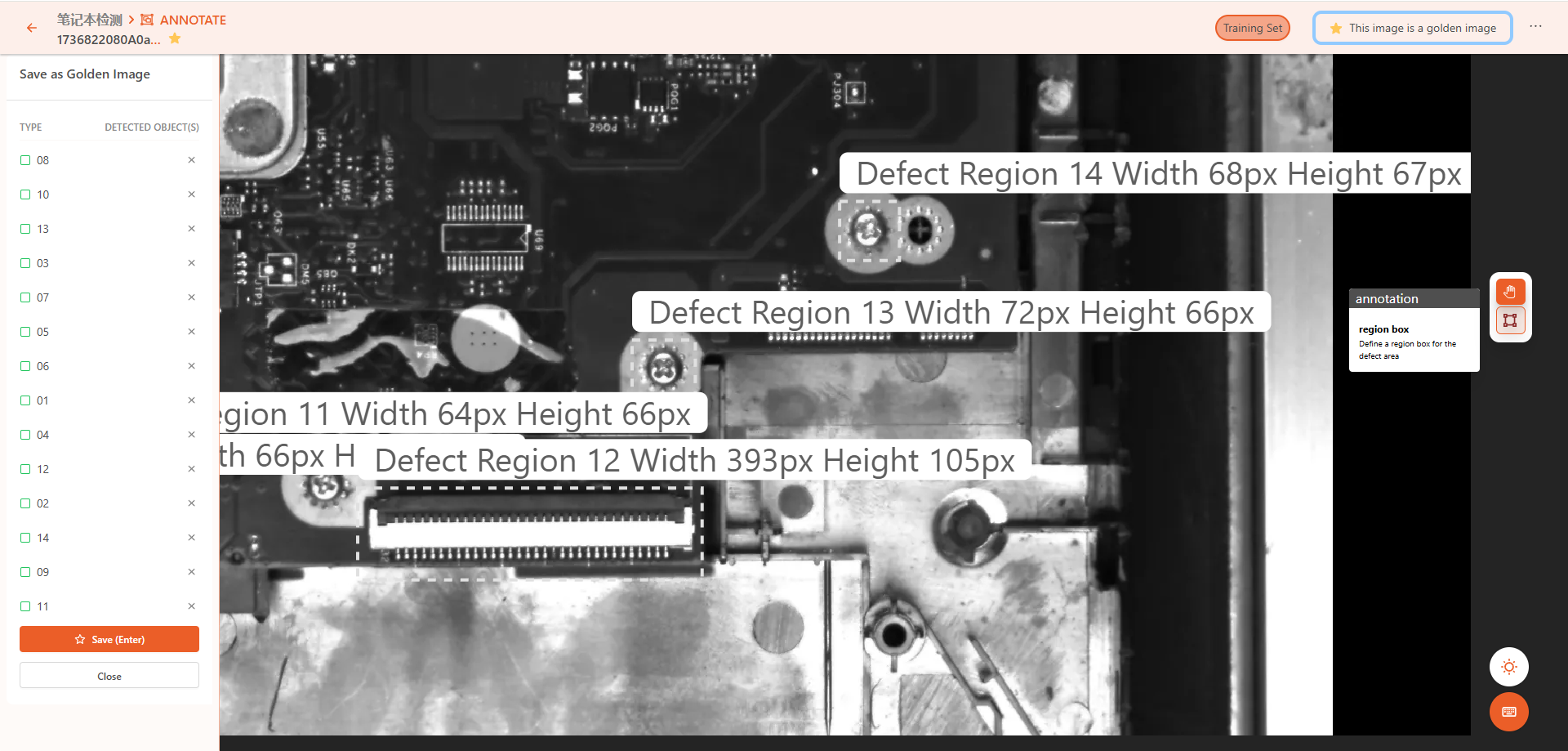Unsupervised Defect Segmentation
Unsupervised Defect Segmentation is a model trained on normal data that can identify whether an object is in an abnormal (NG) state, such as damage, deformation, etc.
After completing model training, refer to the video in the Training section to create a dataset version and deploy the model.
Use Cases
Unsupervised Defect Segmentation is suitable for the following scenarios:
Single Object: The dataset contains only one type of object, and its position must remain relatively fixed.
Defect Detection: The object can be in either a normal or abnormal (NG) state, enabling the detection of changes such as damage or deformation.
Model Detection Modes
Unsupervised Defect Segmentation supports two detection modes. Choose the appropriate one based on your use case:
Image-Level - Analyzes specific regions within the image to determine whether defects exist in those target areas.
Pixel-Level - Analyzes each pixel within specific regions of the image to locate and segment abnormal areas.
Annotation Methods
In unsupervised defect segmentation projects, each detection mode requires a different annotation approach, as described below:
Image-Level First, define a reference image and draw detection regions on it. Save the result as a template. Since unsupervised detection assumes fixed object positions, all images should use the same layout of detection regions to cover the target parts.
During annotation, click on each detection region and label it as either OK or NG.
Pixel-Level Again, start by defining a reference image and selecting the detection regions, then save the result as a template.
Use the intelligent annotation tool or polygon tool to outline the defects within the detection region. If the image has no defects, label it as defect-free.
Notes
Training with Normal Samples Only Only normal samples are used during training. In fact, only one reference image is used to train the model. The rest of the normal samples help the model determine a reasonable threshold for what is considered "normal."
备注
During prediction, the model generates an AI Deviation Score ranging from 0 to 1. - A score of 0 means the sample is identical to the reference image. - A score close to 0 indicates high similarity to the normal sample. - A score of 1 means the sample is completely abnormal. - The model automatically sets a threshold based on the training set. Samples below the threshold are considered normal, while those above are considered abnormal.
Data Consistency Detection regions in normal images must not contain any defects. Otherwise, the training may fail or yield poor results.
Multiple Defects Support If an object has multiple defects, you may annotate each defect area separately.
No Default Augmentation No data augmentation is applied by default during training with the unsupervised defect segmentation model.
Training Modes There are two training modes: Fast and Accurate. - Fast mode compresses each detection region to 256×256. - Accurate mode compresses each region to 512×512 for training. If your image resolution is very high, it is recommended to split it into smaller detection regions to reduce resolution per region.
Practice
Download the practice data unsupervised_data.zip from the following link: Practice Data
After extraction, you will obtain 11 images and their annotation files (.json). - Upload the images to DaoAI World for annotation practice. - After completing the annotations, upload the images and annotation files together to validate the model training results.


